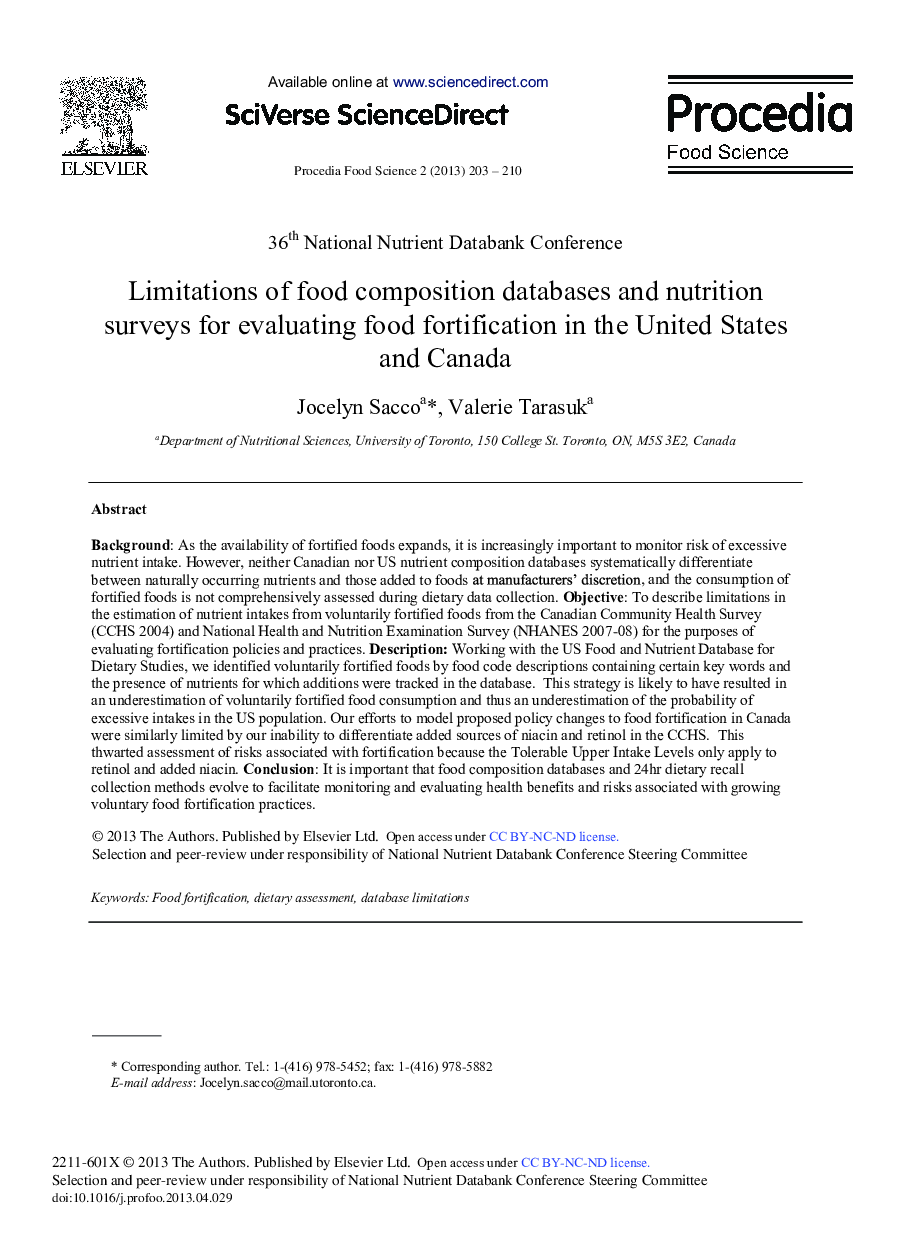| Article ID | Journal | Published Year | Pages | File Type |
|---|---|---|---|---|
| 1265508 | Procedia Food Science | 2013 | 8 Pages |
BackgroundAs the availability of fortified foods expands, it is increasingly important to monitor risk of excessive nutrient intake. However, neither Canadian nor US nutrient composition databases systematically differentiate between naturally occurring nutrients and those added to foods at manufacturers’ discretion, and the consumption of fortified foods is not comprehensively assessed during dietary data collection.ObjectiveTo describe limitations in the estimation of nutrient intakes from voluntarily fortified foods from the Canadian Community Health Survey (CCHS 2004) and National Health and Nutrition Examination Survey (NHANES 2007-08) for the purposes of evaluating fortification policies and practices.DescriptionWorking with the US Food and Nutrient Database for Dietary Studies, we identified voluntarily fortified foods by food code descriptions containing certain key words and the presence of nutrients for which additions were tracked in the database. This strategy is likely to have resulted in an underestimation of voluntarily fortified food consumption and thus an underestimation of the probability of excessive intakes in the US population. Our efforts to model proposed policy changes to food fortification in Canada were similarly limited by our inability to differentiate added sources of niacin and retinol in the CCHS. This thwarted assessment of risks associated with fortification because the Tolerable Upper Intake Levels only apply to retinol and added niacin.ConclusionIt is important that food composition databases and 24hr dietary recall collection methods evolve to facilitate monitoring and evaluating health benefits and risks associated with growing voluntary food fortification practices.
